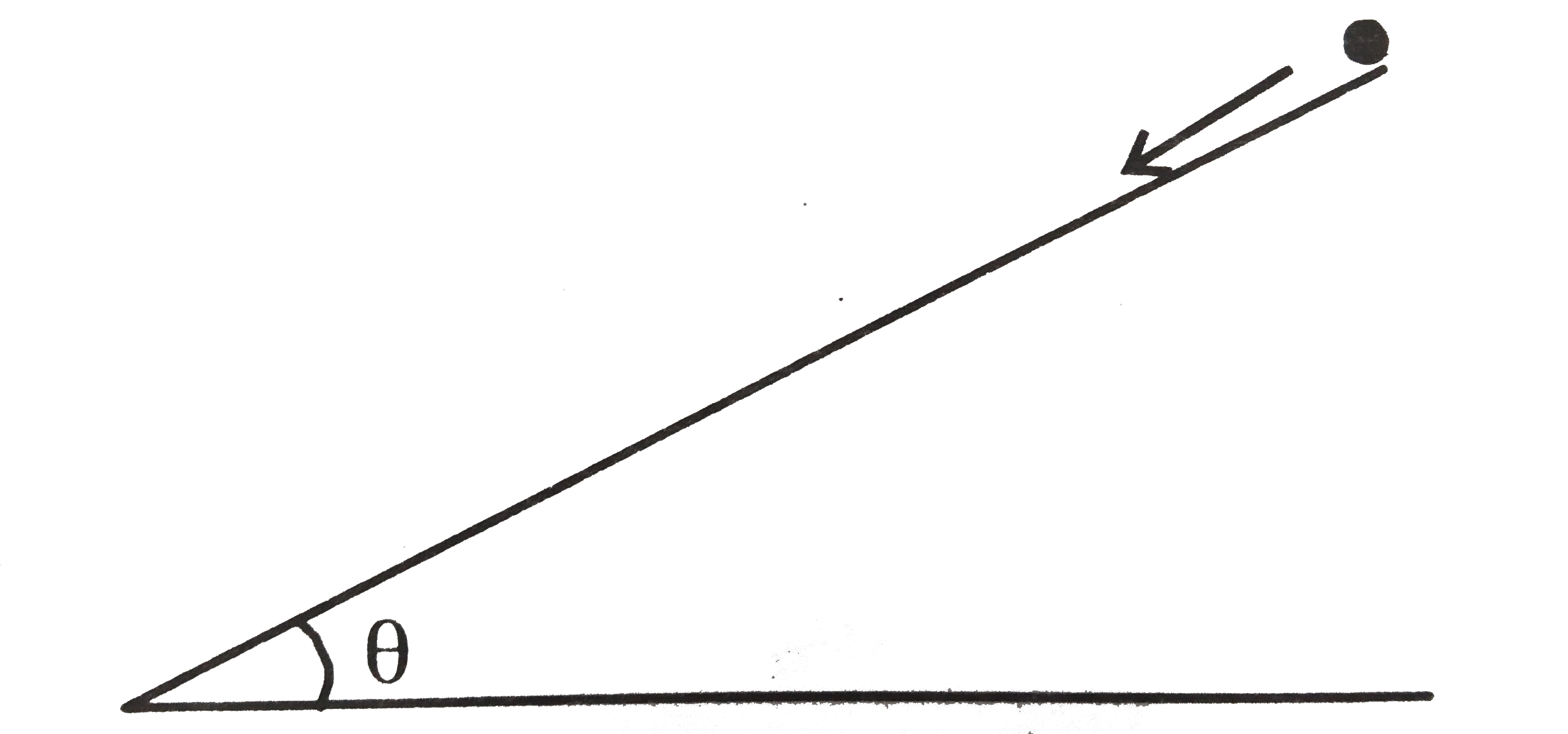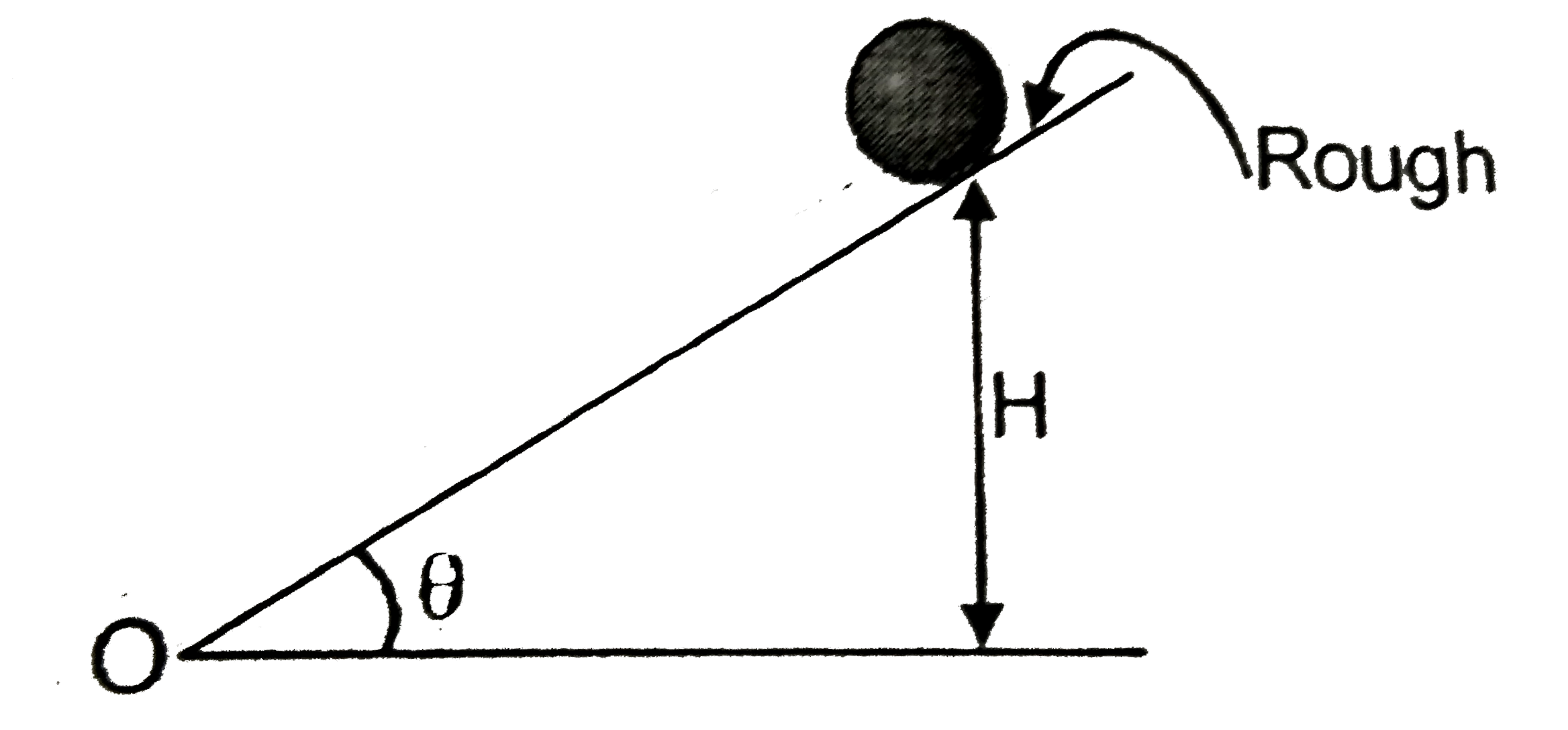A wheel A is connected to a second wheel B by means of inextensible string, passing over a pulley C, which rotates about a fixed horizontal axle O, as shown in the figure. The system is released from rest. The wheel A rolls down the inclined plane OK thus pulling up wheel B which rolls along the inclined plane ON.
![A wheel A is connected to a second wheel B by means of inextensible string, passing over a pulley C, which rotates about a fixed horizontal axle O, as shown in the figure. The system is released from rest. The wheel A rolls down the inclined plane OK thus pulling up wheel B which rolls along the inclined plane ON. Determine the velocity (in m/s) of the axle of wheel A, when it has travelled a distance s = 3.5 m down the to be slope. Both wheels and the pulley are assumed homogeneous disks of identical weight and radius. Neglect the weight of the string. The string does not over C. [Take alpha =53^@ and beta=37^@]](https://d10lpgp6xz60nq.cloudfront.net/physics_images/BMS_VOL2_C03_E01_311_Q01.png)
Determine the velocity (in m/s) of the axle of wheel A, when it has travelled a distance s=3.5m down the to be slope. Both wheels and the pulley are assumed homogeneous disks of identical weight and radius. Neglect the weight of the string. The string does not over C. [Take α=53∘ and β=37∘]
The correct Answer is:2
Applying conservation of energy we get
mgs(sinα−sinβ)=12Iω2+2(12mv2+12Iω2)
where ω=vr and I=mr2/2
putting values and solving we get v=2m/s
Topper's Solved these Questions
- RIGID BODY DYNAMICS 2BOOK - CENGAGE PHYSICSCHAPTER - RIGID BODY DYNAMICS 2EXERCISE - Integer
7 Videos
- RIGID BODY DYNAMICS 2BOOK - CENGAGE PHYSICSCHAPTER - RIGID BODY DYNAMICS 2EXERCISE - Fill In The Blanks
7 Videos
- RIGID BODY DYNAMICS 2BOOK - CENGAGE PHYSICSCHAPTER - RIGID BODY DYNAMICS 2EXERCISE - Multiple Correct
26 Videos
- RIGID BODY DYNAMICS 1BOOK - CENGAGE PHYSICSCHAPTER - RIGID BODY DYNAMICS 1EXERCISE - Integer
11 Videos
- SOUND WAVES AND DOPPLER EFFECTBOOK - CENGAGE PHYSICSCHAPTER - SOUND WAVES AND DOPPLER EFFECTEXERCISE - Integer
16 Videos
Similar Questions
A body of mass 50kg resting on a smooth inclined plane is connected by a massless inextensible string passing over a smooth pulley, at the top of the inclined plane have another mass of 40 kg as shown in the figure. The distance through which 50 kg mass fall in 4 sec will be - (The angle of the inclined plane is 30∘)

View SolutionThe radius of the wheel of a wheel and axle is 4 times the radius of the axle. What is the mechanical advantage of the wheel and axle?
View Solution
Knowledge Check
A solid iron sphere A rolls down an inclined plane, while another hollow sphere B with the same mass and same radius also rolls down the inclided plane. If VA and VB are their velocities a the bottom of the inclined plane. Then
AVA>VBBVA=VBCVA<VBDVA>=<VBWhich of these is not a wheel and axle
AScrew driverBTapCScrewDDoor knobsA wheel A starts rolling up a rough inclined plane and another identical wheel B starts rolling up a smooth plane having same inclination with the horizontal. If initial velocity of both the wheels is same then:
AA stops ascending earlier than BBkinetic energy of B never becomes zeroCmaximum height ascended by A is less than that, by BDfriction acting on A remains constant during the round trip
A ball is released from rest and rolls down an inclined plane, as shown in the following figure, requiring 4s to cover a distance of 100 cm along the plane:

Which one of the following is the correct value of angle θ that the plane makes with the horizontal? (g = 1000 cm/s2)
View SolutionA and B are two identical rings released from the top of an inclined plane . A slides down and B rolls down. Then which reaches the bottom first ?

View SolutionA solid ball of mass 'm' is released on a rough fixed inclined plane from height H. The ball will perform pure rolling on the inclined plane. Then

View SolutionWhat is the principle used in wheel and axle? Mention its applications.
View SolutionA car moves up on a plane road. The induced emf in the axle connecting the two wheel is maximum when it
View Solution
